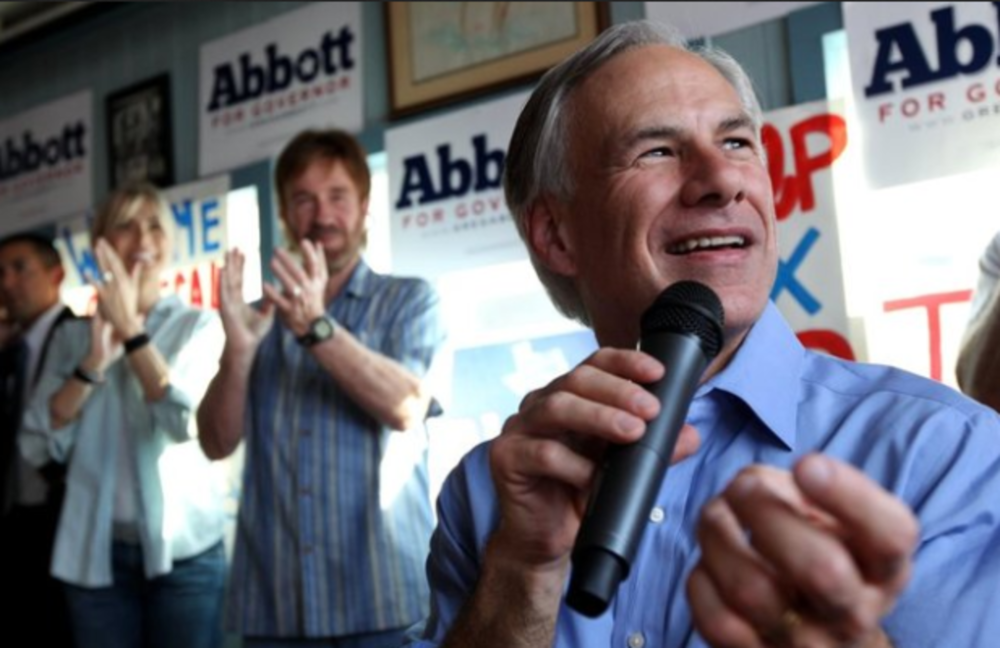In 2010 Texas Governor Rick Perry’s reelection campaign spent about $100,000 on online display ads, digital marketing, and data analytics. This year Governor-elect Greg Abbott’s campaign spent about $7 million on digital. Historians who color this election year as one in which the American electorate rejected the policies of President Barack Obama won’t be entirely wrong, they just won’t be entirely right. Voters commonly turn their backs on the POTUS in midterm election years, but this may be the first year that likely voters for a particular candidate were tracked down one-by-one and convinced to head out to the polls and pull the lever. That’s a big reason why Abbott smothered highly touted Democrat candidate Wendy Davis by 20 percentage points in the polls last week.
Abbott’s people are keeping mum on the matter in the general press. “I hope that nobody paid attention to what we did,” says Abbott general campaign consultant Dave Carney, who worked on the last five Republican gubernatorial campaigns.
And if they did, they might think they had stumbled into a marketing ROI conference. Abbott campaign staffers don’t talk about gross rating points and poll results like most political hacks. They talk about weekly goals and objectives, persuasion universes, and A/B testing. “Nothing we did was normal. Every aspect of the campaign had goals and metrics,” Carney says.
Everyone who has a doorbell knows what political canvassing is. Candidates deploy armies of volunteers to visit every household in an up-for-grabs district, whether the resident be Democrat, Republican, or recently arrived refugees from Burkina Faso. Not the Abbott campaign. They only knocked on doors of households containing voters who’d shown interest in voting for Abbott, but who probably wouldn’t be voting in the election—qualified customers, in other words, who needed a little push into conversion.
“Volunteers would see houses with signs in the yard for Republican candidates and couldn’t understand why we were passing them by,” says Carney. “We had a hard time explaining it to them, but they all became believers. We convinced a lot of people that this wasn’t mumbo-jumbo.” Rigid ROI standards helped get the point across. Field reps who missed weekly goals of verifying 250 Abbott voters were shown the door.
The Abbott campaign’s digital machinery was operated by Targeted Victory, a digital agency focused on Republican clients. “We had very clear marching orders as to how much money we needed to raise and what we were going to do with the lists we built,” says Chris Gulugian-Taylor, director of client strategy at Targeted Victory. The agency’s goal was not just to build an audience, but also to build an engaged audience that the campaign could call to action offline. One of the reasons that direct mail was downplayed in the campaign was that it’s difficult to track resulting actions, or even individual voters, through the channel.
Targeted Victory worked at moving people down a set digital path, from Facebook fans to email recipients to donors and, ultimately, to the voting booth. Personalization of messaging was crucial to this process. Gulugian-Taylor notes that 74 different marketing campaigns were run throughout the year, each with slight variations. Key to getting this complex task done, he says, were the dedicated resources approved by the Abbott campaign. It employed two full-time videographers and four in-house digital marketers to create specific content for target audiences.
One of the biggest victories digital marketing techniques provided to the Abbott campaign was winning a majority of male Hispanic voters, an almost unheard-of coup in a demographic that typically votes Democrat. In creating models of Hispanic and African-American voters, the campaign did 1,000-person interviews of each demographic and ran Monte Carlo simulations of election outcomes in the group. “We discovered about 150,000 people who never showed up for elections, but if they did, in this simulation, they always voted for Abbott,” Carney says. “We gave these names to Chris and set him to work on these specific people. In the early voting we saw five to six times the turnout in those segments.”
Despite the remarkable results Abbott realized from this data-driven campaign, Carney is realistic about the constantly changing nature of digital technology. “What we did this year was not available last year, and we’ll be doing something totally different in 2016,” he says matter-of-factly. “Most of what we did will be horse and buggy in two years.”








